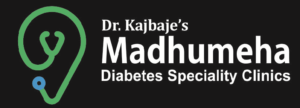When the Cure Conceals the Curse: Unraveling the Hidden Risks of Drug-Induced Diabetes
In a world where medications are often hailed as life-saving marvels, there lies a less discussed narrative: the potential for these “safe” drugs to trigger diabetes. This complex phenomenon, known as drug-induced diabetes, serves as a stark reminder of the delicate balance within our bodies. Through this article, we journey into this lesser-known territory, unpacking the hows, whys, and preventative measures to safeguard one’s health.
Understanding Drug-Induced Diabetes
Before diving deep into the abyss of drug-induced diabetes, let’s establish a foundational understanding of this condition. Drug-induced diabetes occurs when certain medications disrupt the body’s normal glucose metabolism, tipping the balance towards hyperglycemia or high blood sugar levels.
Common Culprits
- Steroids: Used to reduce inflammation.
- Beta-blockers: Prescribed for heart conditions.
- Statins: Aimed at lowering cholesterol levels.
- Antipsychotics: Used in the treatment of psychiatric disorders.
Each class of medication has its mode of action, inadvertently affecting blood sugar levels in susceptible individuals.
Intersecting Paths: Medication and Metabolism
How exactly do these medications interfere with glucose metabolism? The answer lies in the delicate dance of hormones and physiological processes that maintain our body’s equilibrium.
Influence on Insulin Resistance
Some medications increase the body’s resistance to insulin, a key hormone regulating blood sugar levels. This resistance forces the pancreas to work overtime, eventually leading to its overstrain and the onset of diabetes.
Disruption of Beta-Cell Function
Certain drugs can directly damage the pancreas’ beta cells, responsible for insulin production. Diminished insulin leads to unmanaged blood sugar levels, paving the path for diabetes.
Signs to Watch For
Recognizing early signs of drug-induced diabetes can be pivotal. Symptoms may include:
- Persistent thirst
- Frequent urination
- Unexplained weight loss
- Fatigue
- Blurry vision
Awareness and prompt action can significantly mitigate risks and complications.
Navigating the Maze: Prevention and Management
Being informed and vigilant can play a crucial role in preventing the onset of drug-induced diabetes. Here’s what you can do:
Regular Monitoring
If you’re starting a medication known to impact blood sugar levels, frequent monitoring can help catch any changes early.
Lifestyle Adjustments
Incorporating a balanced diet and regular exercise can bolster your body’s resilience against the adverse effects of these medications.
Open Dialogue with Healthcare Providers
Discussing concerns and alternative medication options with your doctor is essential. Tailoring medication to suit individual health profiles can minimize risks.
Toward a Healthier Tomorrow
Drug-induced diabetes underscores the complex interplay between medication and body chemistry. It beckons to a future where patient education and holistic care paradigms take center stage. As individuals, staying informed and proactive about one’s health choices is the first step towards safeguarding against such hidden risks.
“Awareness is the greatest agent for change.” – Eckhart Tolle
In conclusion, while medications are indispensable allies in our health journey, recognizing their potential side effects, like drug-induced diabetes, is crucial for informed health decisions. Vigilance, lifestyle management, and an open dialogue with healthcare providers emerge as pillars of prevention. Let’s navigate this intricate health landscape with awareness and care, ensuring that our pathways to wellness are both informed and safe.
